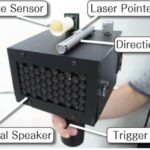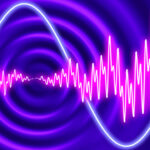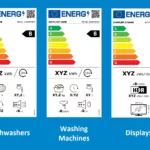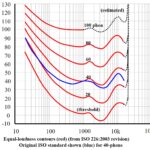According to the Centers for Disease Control (CDC) estimates, 22 million workers are exposed to potentially damaging noise at work each year. In addition to an industrial environment with heavy assembly/processing machinery or a construction site, the workplace can include a sports venue, a tarmac, or a wide-open space when the job includes machinery that generates loud noises like a jackhammer. In any case, hearing loss is preventable if the right precautions are taken, and the worker is aware of the sound levels in the workplace.
Can you hear me now?
In the United States, the Department of Labor’s Occupational Safety and Health Administration (OSHA) has issued the Occupational Noise Exposure Standard (OSHA 29 CFR 1910.95). OSHA requires employers to implement a hearing conservation program when noise exposure is at or above 85 decibels (dB) averaged over 8 working hours. A quick tip for concerned individuals in a specific environment or situation to verify their concerns is the ease of hearing someone speak who is 3 feet away. If they have to raise their voice to be heard, the noise levels might be over 85 dB. An excessive noise level in the workplace is also indicated by hearing ringing or humming in the ears or experiencing temporary hearing loss after leaving work.
Available instruments to measure the noise levels in a workspace include sound level meters, noise dosimeters, and octave band analyzers. However, for concerned workers unaware of the details of their specific situation, the National Institute for Occupational Safety and Health (NIOSH) that operates under the Centers for Disease Control and Prevention (CDC) has a tool available for the public to download that uses the existing capabilities of mobile iOS devices. On these smartphones, the NIOSH Sound Level Meter App can measure sound levels in the workplace and provide noise exposure parameters to help reduce occupational noise-induced hearing loss. With the free app, the smartphone with its integrated MEMS microphones or an external microphone achieves the best features of professional sound levels meters and noise dosimeters in one simple tool.

Using the smartphone’s GPS feature, the app can provide an exact geospatial location of the noise measurement and total run time for the current measurement as well as:
- Instantaneous level: Default sound pressure level in A, C, or Z-weighted decibels [dB(A), dB(C), dB(Z)].
- LAeq: Equivalent (averaged every second) continuous sound level in A-weighted decibels [dB(A)].
- Max level: Highest sound pressure level during a measurement period.
- Peak sound pressure level in C-weighted decibels [dB(C)] (LCpeak) for situations where loud bangs occur.
- Time-weighted average (TWA) sound level accumulated over any time period, but with its average computed over an 8-hour time period.
- Dose: A percentage of the maximum allowable daily noise dose. Exposures at 100% or above are considered hazardous.
- Projected Dose: The current noise dose, over the current measurement duration, projected forward over 8 hours (assuming the sound level remains constant over that same 8-hour period).
References
Occupational Noise Exposure, https://www.osha.gov/noise
https://www.osha.gov/laws-regs/regulations/standardnumber/1910/1910.9
NIOSH Sound Level Meter App, https://www.cdc.gov/niosh/topics/noise/pdfs/NIOSH-Sound-Level-Meter-Application-app-English.pdf
Infineon Technologies, AN547 – Why you need high performance, ultra-high SNR MEMS microphones





